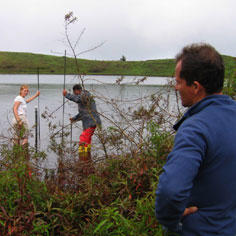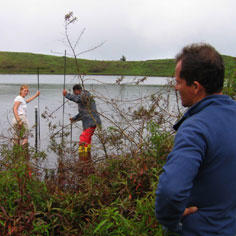
Environment and Biodiversity
Place
Ecuador, Galapagos Islands., Ecuador
Grant(s)
60,000 € to the Selection Committee at 2004/09/28
Project leader
---Naturalia et Biologia---
Summary

In the Galapagos Islands, inscribed on the World Heritage List, the freshwater cycle is not understood very well. Many questions have come up, remaining, for the moment, unanswered. For example, why are there no waterways in spite of heavy rainfall? Today, understanding these phenomena is of utmost importance due to the waves of immigrants from South American which regularly increase the local population. These people draw their water supply from wells dug without control. There are no collection networks and no wastewater decontamination stations. On the medium-term, these various practices create the risk of irreparable consequences on the ecosystem: lagoon reclamation, seawater intrusion, and salinisation of wells and underwater resources. To effectively treat these serious problems, a study conducted by the French joint research unit Sisyphe (Structure and function of continental water systems) upon request of Ecuadorian authorities and the French Embassy in Quito has been working since 2003 to understand the hydrological cycle of one of these islands (Santa Cruz). This study will help establish a well-designed plan for ecosystem-friendly freshwater resource use. Sisyphe has already conducted four missions thanks to the funding of its multitude of partners. A final series of geophysical investigations will be performed using a helicopter, due to the difficulty in accessing the site, using an electromagnetic method. The Veolia Foundation decided to make a 60,000 euro contribution to financing this airborne campaign. Once this innovative method is tested and fine-tuned, it could be used in many other regions all over the planet where difficult access makes underground investigation impossible through traditional methods.
Progress report
The airborne mission of the French joint research unit Sisyphe, dubbed Sky Team, conducted its observations during the year 2006. To start with, in May, its geophysicists, as planned, investigated the island of Santa Cruz. To consolidate their results, they then performed the same analyses above the island of San Cristobal. These two studies served to compile a very precise inventory of the water cycle of both groups. The current step involves interpreting all the data collected before drawing conclusions in terms of the conservation of the freshwater reserve throughout the archipelago.

